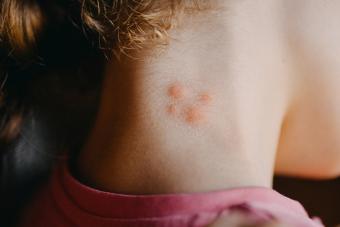
Crohn's Disease and skin rashes can occur together. In fact, many GI disorders can also affect the skin. Crohn's Disease is an inflammatory disorder affecting the digestive tract. It's thought to be caused by a problem with the immune system, with inflammation occurring out of control. The disease can appear anywhere along the digestive tract including the mouth, esophagus, intestines and rectum. Common symptoms include diarrhea, fever, abdominal pain, and tiredness. Crohn's is a lifelong problem that requires continual management.
Understanding Crohn's Disease and Skin Rash
Individuals should never try to diagnose themselves with this information. It is for informational purposes only and a physician should be the one to diagnose, treat, and help the patient to manage this serious condition. Bowel obstructions and bowel surgeries are sometimes needed in the emergent care of this disease. Individuals should always seek the care of a physician during episodes of flare ups.
According to the Mayo Clinic, while Caucasians are at highest risk for developing Chrohn's disease, it affects all ethic groups, however, and many people suffer from Crohn's Disease and related skin rashes. Rashes and sores can appear in the mouth, around the anus, and elsewhere on the skin.
Mouth Sores
Although it's not common, people with this disorder can have ulcers and other mouth sores. The corners of the mouth may be cracked, reddened, and sore. Apthous ulcers, also known as canker sores, may appear inside the mouth. Tongue, inner cheeks and lips, gums, and soft palate can all be affected. The lips, tongue, and gums may appear swollen. The swelling may be painful.
Skin Rashes
Several types of skin rashes can accompany Crohn's disease. None of these rashes are unique to Crohn's, however. They can occur on their own or can accompany other diseases.
- Pyoderma gangrenosum. This is a type of skin ulcer. It tends to appear on the lower legs but can occur anywhere. It starts with a small bump or blister, then expands to a deep, painful ulcer. Multiple ulcers can appear at once. Pyoderma gangrenosum can appear even if intestinal disease is under control.
- Erythema nodosum. This is an inflammation of fat underneath the skin's surface. It appears as red, painful lumps on the lower legs and sometimes on the thighs or arms. It tends to appear when intestinal disease is more active.
- Necrotizing small vessel vasculitis. Vasculitis is an inflammation of blood vessels which leads to bleeding underneath the skin. It can appear as small red spots or larger bruises, usually on the legs or arms.
Fissures
Fissures, which are deep, narrow breaks in the skin, can occur in people with Crohn's Disease. Most often, these fissures appear around the anus. They can make having a bowel movement very painful. Fissures may also appear in or around the mouth.
Diagnosing Crohn's from a Skin Rash
Sometimes, skin problems appear before the gastrointestinal symptoms of Crohn's Disease. However, there are many other symptoms of Crohn's Disease, and skin rashes do not mean that Crohn's will definitely develop. In addition, there are many skin problems which may appear worrisome but are not associated with Crohn's, such as skin irritation, skin fungus, and boils.
Mouth sores can appear with many other conditions, including simple viral infections. Erythema nodosum can be related to strep throat, pregnancy, tuberculosis, drug reactions, and several other causes. Only about half of the people who develop pyoderma gangrenosum turn out to have Crohn's.
Treatment
There are many treatments which can help with the intestinal manifestations of Crohn's Disease, and skin rashes can usually be improved as well. Treatment for the gastrointestinal problems often helps with the skin problems. Treatments may include:
- Aminosalicylates. These medicines help reduce intestinal inflammation. Specific drugs include sulfasalazine, mesalmine, balsalazide, and olsalazine.
- Corticosteroids. Topical corticosteroids (creams or ointments applied directly to the skin) can help with many of the skin manifestations. Oral steroids are used for the intestinal disease. These drugs reduce immune reactions.
- Immune modifiers. These non-steroid drugs also decrease the activity of the immune system. They include azathioprine and 6-mercaptopurine.
- Stool softeners. Stool softeners and gentle laxatives can help relieve the symptoms of anal fissures.
- Botulinum toxin. Botulinum toxin injections can also help ease symptoms from anal fissures and allow healing.
Coping with Crohn's Disease: Change Your Lifestyle
A diagnosis of Crohn's disease is serious, but it does not have to mean that you cannot continue to enjoy as normal a lifestyle as possible. Experts like those at the Mayo Clinic recommend that patients modify their life habits to help manage their symptoms. This means living a healthy lifestyle that includes eating a proper diet that avoids trigger foods, exercising regularly, and reducing stress. In addition to making these changes, you may want to consider taking classes to educate yourself on the subject or joining a support group. The key is to control your Crohn's disease to the extent of your ability instead of allowing it to control you.







